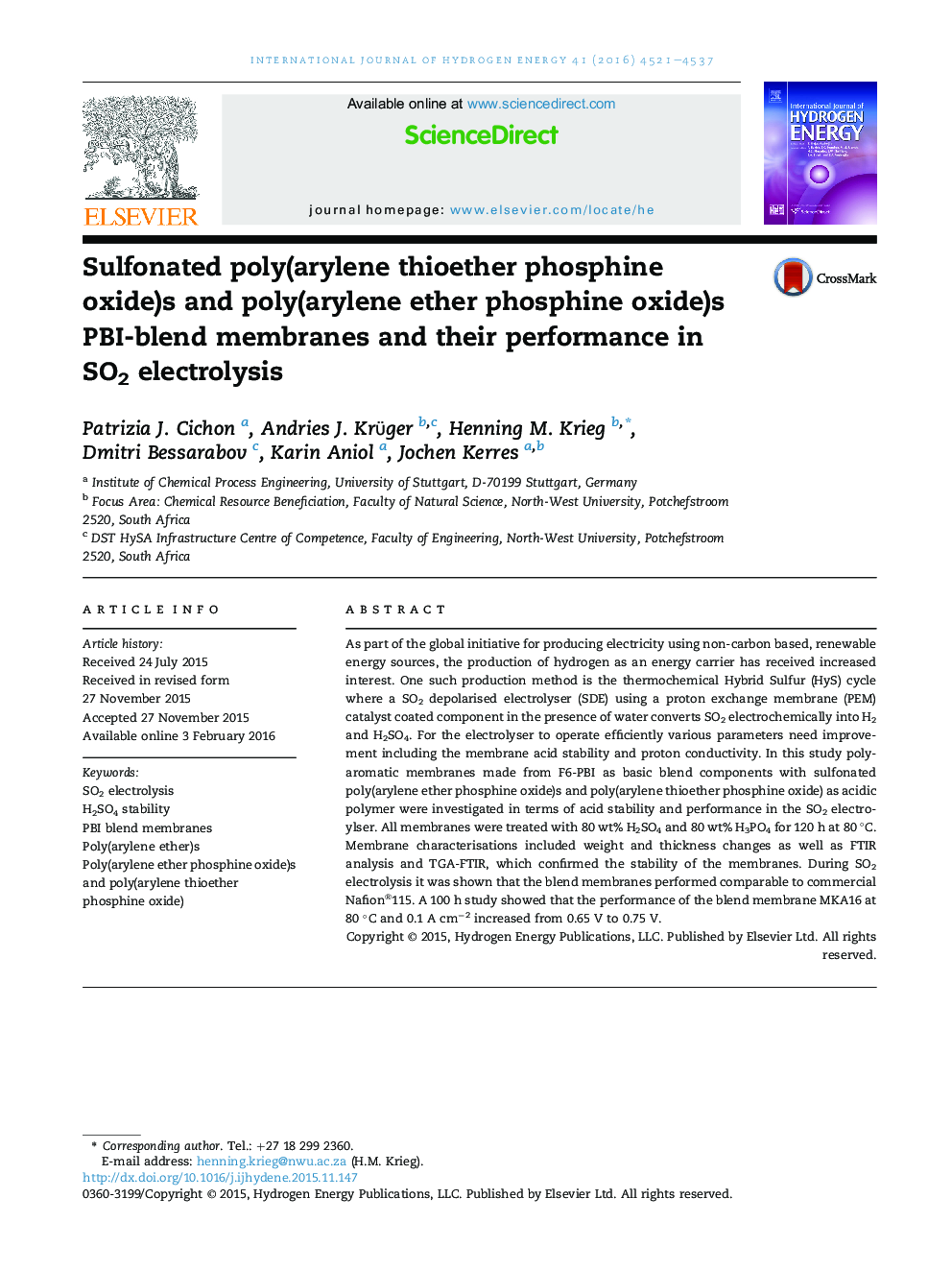| Article ID | Journal | Published Year | Pages | File Type |
|---|---|---|---|---|
| 1271141 | International Journal of Hydrogen Energy | 2016 | 17 Pages |
•Novel polyaromatic blend membranes containing F6-PBI and phosphine oxide derivatives.•Stability of blend membranes in 80 wt% H2SO4 and 80 wt% H3PO4 for 120 h at 80 °C.•Blend membranes performed comparable to Nafion®115 during SO2 electrolysis.•Performance of MKA16 at 80 °C and 0.1 A cm−2 increased from 0.65 V to 0.75 V after 100 h.
As part of the global initiative for producing electricity using non-carbon based, renewable energy sources, the production of hydrogen as an energy carrier has received increased interest. One such production method is the thermochemical Hybrid Sulfur (HyS) cycle where a SO2 depolarised electrolyser (SDE) using a proton exchange membrane (PEM) catalyst coated component in the presence of water converts SO2 electrochemically into H2 and H2SO4. For the electrolyser to operate efficiently various parameters need improvement including the membrane acid stability and proton conductivity. In this study polyaromatic membranes made from F6-PBI as basic blend components with sulfonated poly(arylene ether phosphine oxide)s and poly(arylene thioether phosphine oxide) as acidic polymer were investigated in terms of acid stability and performance in the SO2 electroylser. All membranes were treated with 80 wt% H2SO4 and 80 wt% H3PO4 for 120 h at 80 °C. Membrane characterisations included weight and thickness changes as well as FTIR analysis and TGA-FTIR, which confirmed the stability of the membranes. During SO2 electrolysis it was shown that the blend membranes performed comparable to commercial Nafion®115. A 100 h study showed that the performance of the blend membrane MKA16 at 80 °C and 0.1 A cm−2 increased from 0.65 V to 0.75 V.
